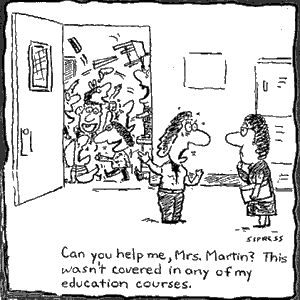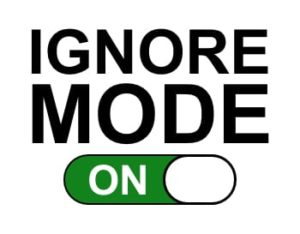Student Contributor: Deidra Churchill
 Planned ignoring can be used when a child is off task and it is believed at the time that they may be able to correct their behavior themselves. It is helpful as a conscious first response to a slightly distracting situation that another response may draw more attention to.
Planned ignoring can be used when a child is off task and it is believed at the time that they may be able to correct their behavior themselves. It is helpful as a conscious first response to a slightly distracting situation that another response may draw more attention to.
This tool should be used very intentionally. It is not to be mistaken with simply ignoring a behavior because it seems difficult to deal with. It is planned as a first response to an issue as a way to create as little distraction as possible. However, if the problem does not resolve, and the behavior becomes more distracting than another corrective tool may be, further action is required. Planned ignoring is considered an immediate response, but it is a hard skill to master. The key is to understand that it is planned and it is not a way to get out of dealing with a misbehavior, but also a way to give the behavior time to correct itself.
 Planned ignoring can fit into any theory of influence. In teacher-directed, collaborative, and student-directed theories the goal is to have students engage and planned ignoring is the first step in acknowledging a behavior without drawing any attention away from learning. The step the teacher chooses to take after this is what may differentiate between the theories. I put planned ignoring into the corrective phase because it is happening after a misbehavior is notices. It does not fall into the preventative phase because it is not a way of setting the students up for success, but rather continue the students on the path of minimal distractions while creating time for the behavior to correct itself. Planned ignoring can happen when the learning is taking place. Similar to supportive, however, it is not enhancing the learning, but instead, attempting to keep the learning from being disrupted.
Planned ignoring can fit into any theory of influence. In teacher-directed, collaborative, and student-directed theories the goal is to have students engage and planned ignoring is the first step in acknowledging a behavior without drawing any attention away from learning. The step the teacher chooses to take after this is what may differentiate between the theories. I put planned ignoring into the corrective phase because it is happening after a misbehavior is notices. It does not fall into the preventative phase because it is not a way of setting the students up for success, but rather continue the students on the path of minimal distractions while creating time for the behavior to correct itself. Planned ignoring can happen when the learning is taking place. Similar to supportive, however, it is not enhancing the learning, but instead, attempting to keep the learning from being disrupted.
More Information –
Tool Source: Di Giulio reading and Gus

